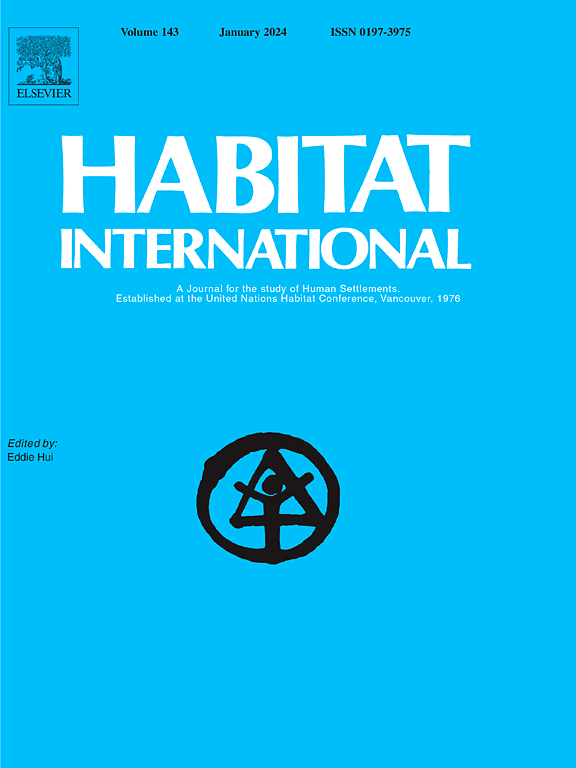探索城市绿地分布模式与可达性、利用和健康的关系:印度KMC可持续城市生活的诊断性规划
IF 6.5
1区 经济学
Q1 DEVELOPMENT STUDIES
引用次数: 0
摘要
城市绿地(UGS)的使用及其利用可以通过改善身心健康、社会凝聚力、环境平衡和城市生活的美学方面来提高生活质量。城市公园是促进健康和福祉的有效形式。该研究是对分布格局是否影响公共卫生系统的可及性和利用以及公共卫生结果的回答。地理空间工具,如平均近邻分析(ANNA)和缓冲区分析,揭示了752个公园在城市范围内的计划外分布。研究证明,公园的空间布局差异导致城市居民的健康和福祉机会差异。均匀分布模式表明公共资源的获取和利用更加公平,但与集群模式相反。在区级和区级的集群模式区,在300 m距离的缓冲区内发现了小面积,在300 m距离的缓冲区外发现了大面积。由于公园分布均匀,可达性和可用性更高,本研究提出了一种基于证据的诊断规划模型,并为健康城市生活提供了可操作的方案。这项研究提出了发展新公园和改善现有公园的政策。城市规划者和政策制定者可以采用所提出的模型规划用于其他类似特征的城市。本文章由计算机程序翻译,如有差异,请以英文原文为准。
Exploring how distribution pattern of urban green space relates to accessibility, utilization and health: Diagnostic planning for sustainable city living in KMC, India
Access to urban green spaces (UGS) and its utilization has a benefit of improving the quality of life through improved physical and psychological health, social cohesion, environmental balance, and aesthetic aspects of urban living. Urban parks are an effective form of UGS for enhancing better health and well-being. The research is an answers to the question whether or not the distribution pattern influences the public accessibility and utilization of UGS and public health outcome. The geospatial tools like Average Nearest Neighbour Analysis (ANNA) and buffer analysis reveals an unplanned distribution of 752 parks within the city limit. The research proves a differential spatial arrangement of parks result in differential health and well-being opportunities for the city dwellers. The uniform distribution pattern evidences a more equitable public access and utilization, however it is contrary to the cluster pattern. A little area found lying within and a huge area beyond the buffer zone of 300-m distance at the borough as well as ward level of cluster pattern-region. Having a result of uniformly distributed parks are more accessible and useable, the study proposes an evidence-based diagnostic planning model with an actionable plan for healthy city living. The study proposes policies for developing new parks and improving the existing parks. The city planners and policy makers may adopt the proposed model plan for other cities of similar character.
求助全文
通过发布文献求助,成功后即可免费获取论文全文。
去求助
来源期刊

Habitat International
Multiple-
CiteScore
10.50
自引率
10.30%
发文量
151
审稿时长
38 days
期刊介绍:
Habitat International is dedicated to the study of urban and rural human settlements: their planning, design, production and management. Its main focus is on urbanisation in its broadest sense in the developing world. However, increasingly the interrelationships and linkages between cities and towns in the developing and developed worlds are becoming apparent and solutions to the problems that result are urgently required. The economic, social, technological and political systems of the world are intertwined and changes in one region almost always affect other regions.
 求助内容:
求助内容: 应助结果提醒方式:
应助结果提醒方式:


